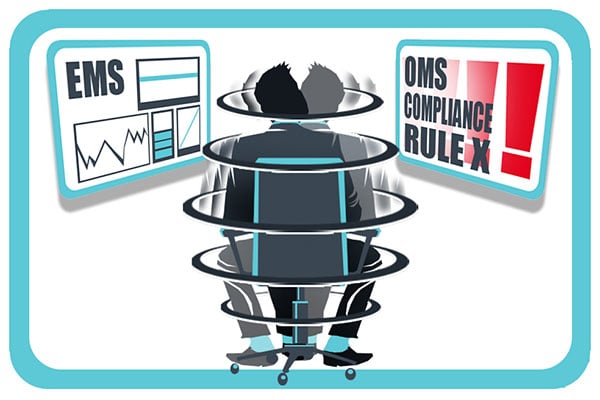Ah, the swivel chair. Long a staple of office Dilberts everywhere, it has a pretty interesting history. Back in 1775 or so, Thomas Jefferson bought an English-style Windsor chair in Philadelphia, then modified it so that it rotated on a central iron spindle and “rollers made of window sash pulleys.” There's even evidence to suggest he used it when writing the Declaration of Independence. (Then he took it home to Monticello so no one else could have it.)
The term ‘swivel chair,’ however, brings up far more tedious images for traders as they find themselves faced with more and more compliance concerns. Trade ideas must be tested against compliance rules in the order management system before traders can switch over to the execution management system for execution. Checking the trade surveillance box increasingly means going outside the trading workflow to check proposed orders for real-time position exposure to restricted lists, counter-party exposure and beneficial-ownership disclosure across asset classes and markets.
Order all good on all fronts? Now the traders can swivel in their chairs to enter those trades into the execution management system (EMS). At last! Unless, of course, the order needs adjusting, in which case the trader needs to swivel back to the OMS and do it all over again. This slows workflows and can cost the traders time and money while they’re away from the market.

The swivel chair has been a dreaded issue in the market for years, as a fully comprehensive answer has been hard to come by. So that’s what we’ve tackled here at Eze, focusing on seamless integration of the EMS with the robust pre-trade compliance features within the OMS.
Combining the pre-trade compliance and allocation capabilities of the traditional OMS with the advanced execution capabilities of a robust EMS means traders can dump their swivel chairs and take advantage of the seamless access to position checking, pre-trade compliance, staged order edits, child order edits and list creation all at once.
For the compliance department, it means being able to identify and mitigate potential issues earlier in the investment lifecycle.
And for the overall firm, it means that, when regulators come knocking with ever-growing list of data demands, they can give a quick, comprehensive answer without overburdening their staff.
Want to know about how we did it, and what's next? We encourage you to swivel around to this article (PDF) by Rob Keller, our head of Product Management and Development; it was originally published in the Q1 2016 issue of Global Trading magazine.
Don’t forget to subscribe and join us next time – we’ll be delving deeper into the challenges of strategy diversification, and how technology can help.

